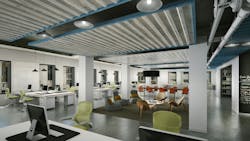The art and science of rendering: Visualization that sells architecture [AIA course]
In the world of architecture, generating buy-in from the client or prospect is nearly impossible without the visual means to communicate design plans. Today, the visualization industry is crowded; renderings are a near commodity. Thanks to social media and the influx of readily accessible programs and tools, clients expect renderings that will excite and engage. Architectural illustrators are expected to produce stunning imagery at a reasonable cost in a short timeframe. The stakes are high.
So how do you create images that stand above the rest? Why do some renderings delight the viewer while others fall flat? In many cases the answer lies not in the architectural design itself but in the failure of the image to “sell” the design. Our firm has developed a process, guidelines, and tricks-of-the-trade to ensure that each deliverable is a stunning depiction of the unbuilt space. Our goal is to deliver visualization that sells.
Whether you are a lone 3D artist at an architecture firm, a freelancer dabbling in renderings, or a team lead at a large rendering studio, the process behind great visualization does not change. Regardless of scope or scale, the right formula will lead to clearer communication, fewer revisions, and more impactful imagery. This course will unveil the nuances behind the most successful renderings. By following these recommendations, the quality of your architectural visualization will be heightened and the process smoother.
Learning Objectives
After reading this article, you should be able to:
Learn the importance of establishing views and securing backplates to set off stunning images.
Describe the three Principles of Photography and the guiding facets of Composition.
Discuss how to use post-production software to mimic photographic phenomena.
Understand the alternatives to a still rendering, including virtual reality and short films.
